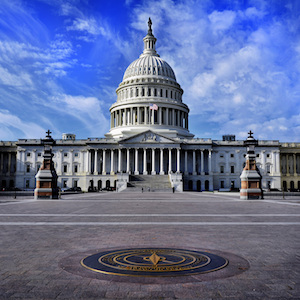
Bipartisan retirement security legislation that shares some overlap with the SECURE Act 2.0—and is supported by the American Retirement Association—has been approved by a key House committee.
approved by a key House committee.
The House Education and Labor Committee on Nov. 10 approved the Retirement Improvement and Savings Enhancement (RISE) Act of 2021 (H.R. 5891) by a unanimous voice vote. The RISE Act was introduced Nov. 5 by committee Chairman Bobby Scott (D-VA); Rep. Virginia Foxx (R-NC), the committee’s ranking Republican; Rep. Mark DeSaulnier (D-CA), Chairman of the Subcommittee on Health, Employment, Labor and Pensions (HELP) Committee; and Rep. Rick Allen (R-GA), the HELP Subcommittee’s ranking Republican.
Provisions in the RISE Act include:
- establishing an online “Retirement Lost and Found” database at the Department of Labor to help workers locate their retirement savings as they move from job to job;
- expanding the SECURE Act’s open MEP provisions to allow unrelated public education and other non-profit employers to join a 403(b) MEP;
- increasing the balance limit from $5,000 to $7,000 for employers to transfer former employees’ retirement accounts from a workplace retirement plan into an IRA;
- permitting employers to offer de minimis financial incentives, such as low-dollar gift cards, to boost employee participation in workplace retirement plans;
- reducing from three years of service to two the requirement for part-time workers to participate in an employers’ retirement savings plan; and
- simplify and clarify reporting and disclosure requirements related to retirement plans.
ARA Support
In a Nov. 9 letter to the committee, the ARA voiced support for the RISE Act, noting that it contains several policy items championed by the organization, including broadening the scope of the SECURE Act’s open MEP provisions to allow unrelated public education and other non-profit employers to join a single 403(b) plan. The ARA also offers support for provisions that would enable retirement plan sponsors to offer small and immediate cash or gift incentives to entice participation, and increase the balance limit whereby plan sponsors can automatically rollover the retirement account balances of unresponsive terminated participants into an IRA.
The letter notes that the ARA was pleased to see that the RISE Act “did not include a concerning provision in the Securing a Strong Retirement Act that would require at least one participant benefit statement to be mailed in a paper format given the impact on the environment as well as plan costs.” The ARA says it will continue to work with Congress on ways to ensure that retirement plan participants are effectively accessing the required disclosures.
While noting the RISE Act has many good provisions, the ARA further observes that it is not perfect. For example, the ARA notes that it prefers the Retirement Lost & Found provision in the SECURE Act 2.0 to allow plan sponsors to transfer account balances of unresponsive terminated participants of under $1,000 to the PBGC.
“The ARA would also like to work with the Committee to incorporate additional good retirement policy provisions into the bill. But on balance, the RISE Act builds upon the success of the workplace retirement system and is yet another example of the extensive history of bipartisan legislating in this important policy area,” the organization states.
SECURE Act 2.0 Merger
Since the House Education and Labor and Ways and Means committees share some jurisdiction over retirement policy issues, it was essential for the Education and Labor Committee to assert its jurisdiction over ERISA issues and provide input on the legislation as it moves through Congress.
According to Rep. Scott, the RISE Act will be combined with the SECURE Act 2.0 before reaching the full House of Representatives for consideration. Scott did not give any indication of when that might happen, however.
The House Ways and Means Committee approved the SECURE Act 2.0 in May by a unanimous voice vote. The SECURE Act 2.0 builds on the 2019 SECURE Act and includes several provisions advanced by the American Retirement Association.
During consideration of the RISE Act, numerous committee members cited the importance of the original SECURE Act, but noted that Congress’ work was not done and how the new legislation builds on current law to help Americans save for retirement. “To be clear, the RISE Act is not the final word on our Committee’s commitment to improving and expanding access to secure retirement. I know our Committee Members will have additional ideas, and we will continue working with them in the months ahead,” Scott said in his opening statement. “In the meanwhile, the RISE Act would take a key step in the right direction. Most importantly, the bill offers us the opportunity to send a message to workers and retirees across the country that their retirement security is a critical priority for every Member of the Education and Labor Committee.”
Similarly, Ranking Republican Foxx stated: “The RISE Act is a targeted, balanced and bipartisan bill that will improve our retirement system and make the future of retirees more secure. This legislation will expand access to multiple employer plans, decrease the administrative cost of managing retirement accounts for small businesses, and reduce the costs of regulatory burdens on job creators, among other constructive provisions. H.R. 5891 is a continuation of the Committee’s effort to modernize retirement policy to the benefit of workers and job creators.”
- Log in to post comments
